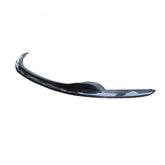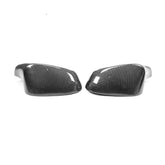The Honda Type R badge represents the pinnacle of performance within the Honda lineup, a symbol of racing heritage and engineering excellence. From its inception in the early '90s to the latest models rolling off the production line today, each Type R iteration has pushed the boundaries of what's possible in a front-wheel-drive performance car. Let's take a thrilling ride through time, comparing the evolution of the Type R models across the years, highlighting their unique characteristics, performance enhancements, and how they've contributed to the Type R legacy.
The Birth of an Icon: Integra Type R
DC2 Integra Type R (1995-2001): The one that started it all. Renowned for its high-revving B18C engine, the DC2 Integra Type R set new standards for what a FWD car could achieve on the track. Its balanced chassis, minimalistic approach to weight reduction, and VTEC engagement created an unforgettable driving experience. This model laid the groundwork for the Type R ethos: a relentless pursuit of performance, even in a daily driver.
The Civic Takes the Baton
EK9 Civic Type R (1997-2000): The first Civic to don the Type R badge brought the performance pedigree to a more accessible platform. The EK9 featured a high-output B16B engine, a lightweight chassis, and a focus on driving purity. It was a statement that performance wasn't reserved for luxury cars or high displacement engines.
EP3 Civic Type R (2001-2005): Marking the Type R's transition into the new millennium, the EP3 was the first to introduce the K20 engine, offering more power and a broader torque range. Its more practical hatchback design and refined driving dynamics made it a favorite among enthusiasts.
FD2 Civic Type R (2007-2010): Exclusive to the Japanese market, the FD2 returned to the sedan body style, boasting improvements in rigidity and aerodynamics. It was lauded for its uncompromising approach to performance, often considered one of the purest Type R models.
FK2 Civic Type R (2015-2017): The FK2 introduced turbocharging to the Type R lineage, significantly increasing power and torque. This model began the global unification of the Type R brand, combining aggressive styling with groundbreaking performance.
FK8 Civic Type R (2017-present): The current iteration of the Civic Type R, the FK8, refined the turbocharged formula. With even more power, advanced aerodynamics, and a sophisticated suspension setup, it has set records at tracks around the world, proving the continuous evolution of the Type R philosophy.
The Special Ones: Accord and NSX Type R
Accord Type R (1998-2002): While not as widely known as its Civic and Integra counterparts, the Accord Type R was a sleeper hit. It combined the practicality of a family sedan with a high-strung H22 engine and a chassis tuned for the track, making it a unique entry in the Type R story.
NSX Type R (1992-1995, 2002-2005): The NSX Type R took Honda's supercar, already a marvel of engineering, and elevated it to legendary status. With a focus on reducing weight and enhancing rigidity, the NSX Type R was a masterpiece of performance, embodying the Type R ethos in a mid-engine, rear-wheel-drive layout.
A Legacy Unmatched
The Type R badge has come to symbolize Honda's commitment to performance, innovation, and driving enjoyment. Each model, from the pioneering DC2 Integra to the record-breaking FK8 Civic, has built upon the legacy, pushing the envelope of what's expected from a performance car. As we look to the future, the Type R brand continues to evolve, promising new levels of excitement and refinement for driving enthusiasts around the world.










